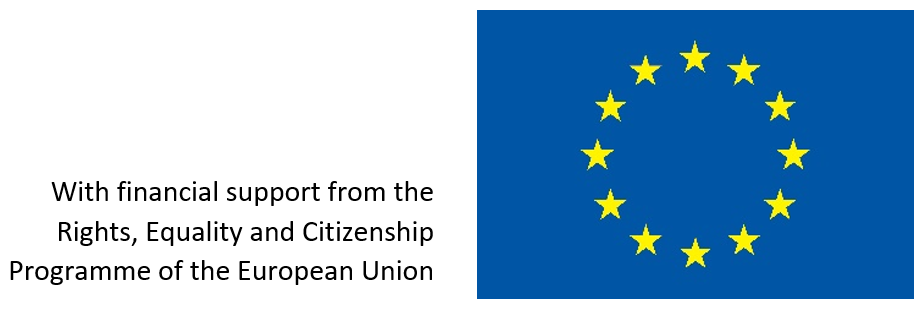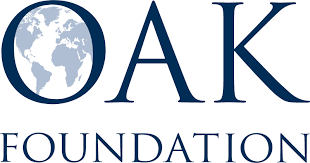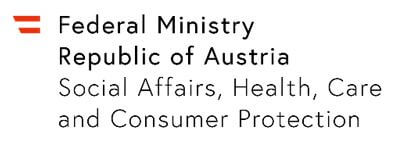The fathers’ rights movement has been around for more than a decade functioning as a loose network of advocates predominantly in the USA and throughout Europe, operating with the said mission of preserving the well-being of children by ensuring that family law frameworks are not discriminatory against fathers. Some in the fathers’ rights movement also stand for the lowering of child support payments and protesting against what they say are mothers’ frequently made up allegations of domestic violence.(1)
The troubling trend is that segments within the fathers’ rights movement have, in a misguided fashion, accused feminists combating violence against women of waging a war against all fathers, by painting all men as perpetrators.(2) Such statements are clearly unfounded as feminists have only pointed to the fact that a significant majority of perpetrators of domestic violence are male, a fact supported by national and international data and research available on domestic violence.(3) Furthermore, the fathers’ rights movement attempts to institute ‘equal parenting’ custody laws or custody laws that discriminate against the party initiating the divorce,(4) discount the devastating effects such laws would have, when the dissolution of family stems from domestic violence and/or where custody may be granted to a perpetrator of domestic violence.
The fathers’ rights movement has visibly increased its attack on feminism as means to discredit the women’s movement, which in its mission to protect women and children victims of domestic violence, stands firmly against ‘equal parenting’ custody laws. To achieve its objectives, the fathers’ rights movement must paint itself as feminism’s unfairly targeted enemy in order to turn public opinion against feminists and their stance, hence paving an easier path to influencing child custody laws that would be in the least disadvantageous to women survivors of violence and their children and at most severely harmful to them. This method of attack is called a boundary-push back, known as a typical response of a countermovement to a perceived enemy boundary-creep, meaning that a countermovement arises based on its belief of being an unfairly targeted opponent of the original movement, as means of influencing public perception.(5)
Dangers of custody by abusive fathers
Child custody has been an important topic in feminism in recognition of the fact that in cases of domestic violence, abusive partners may use the continued connection as means of exerting further violence on the mother and/or the child. As a result, joint custody arrangements allow the perpetrator to continue his violence. Furthermore, automatically awarding joint custody to a man who has battered his partner and the mother of his child evades the fact that by acting violently towards the mother, the father has also acted violently towards the child. Many children, in such cases, witness the abuse (6) and suffer as a result; therefore they also become victims of violence, even when they are not the direct victims. However, children who grow up in violent homes are more likely to be directly abused as well, and regardless of whether they experience or whether they witness violence, they tend to suffer the same behavioral and psychological problems.(7) As a result, automatic ‘equal custody’ laws are not only unjust to the mother, but also to the children, as any abusive parent should not be granted further opportunities to harm the children. If fathers who abuse their children are seen as unfit to have future relationship with the child, why would fathers that abuse the mother of the children be seen as fit parents, when such abuse also counts as violence toward the child?
Survivors of violence face secondary victimization in courts
It is a well-documented fact that separation is a time, when a woman and her children are most at risk for escalated violence by the partner. Intimate partner femicide is often committed at the time of separation. In addition to the dangers faced by the woman and her children, the woman is likely to face financial difficulties (8) and face adversary conditions in the court. ‘Equal custody’ laws can only add to an already difficult situation, when a woman attempting to escape a violent situation would be forced to remain in it as a result of joint custody and the resulting contact with the perpetrator. Furthermore, judges and other professionals (9) in the European Union lack training in domestic violence,(10) which would help judges to understand the situation of the victim and her children, as escaping violence in the family puts women in vulnerable positions. Without proper training of professionals, women face secondary victimization from State institutions, such as courts.
Stories of women’s secondary victimization in courts are too common. A report by Safe Ireland describes a story of a woman survivor of violence, whose violent partner, despite evidence of domestic violence, continued to have access to and abuse the children as a result of a ruling by a judge.(11) Such stories are present in abundance throughout Europe. Women who survived domestic violence and have filed for divorce and/or sole custody are frequently dismissed as being vindictive or mentally unstable, as if courts did not feel domestic violence to be a grave violation against women’s rights and a severe criminal act. Dismissing the claims and appeals of women survivors of domestic violence is not only against the duty of a presiding judge, it may also result in serious consequences for the mother and her children, such as further abuse.
What can the feminist movement do?
The existence of a feminist backlash has been recognized by women’s organizations in the recent years. Feminists have been unfairly targeted by some in the fathers’ rights movement as means to lay blame on what is perceived as discriminatory laws. Furthermore, some family court judges have been known to dismiss women seeking to protect their children from abusive fathers. Although the fathers’ rights movement’s attack on feminism is still to some extent considered a fringe movement, women’s organizations especially, who are often the targets of attack, must take a serious look at the threats posed to feminism and hence to the progress achieved by feminism so far.
The feminist movement is long standing and while facing an adversary road in the future, the movement must evaluate the challenges ahead and especially develop strategies on how to involve the relevant stakeholders, including political and legal decision makers and the broad public in overcoming these challenges. As related to custody, the public is still to a large extent uninvolved in the issue of domestic violence against mothers and its effect on children and must therefore be included in the ongoing discourse among feminists. This must also include politicians as well as justice professionals to ensure that victims are fully protected from violence.
This article was written by Barbara Stelmaszek, who was Project Coordinator for WAVE at the time of this article’s publishing.
This article appeared in the 2013 edition of Fempower. Find the archive of all Fempower magazines here.
Photo by Annie Spratt on Unsplash
Sources
(1) Washington Post. (28 August 2013). Available on: http://articles.washingtonpost.com/2013-08-28/local/41535971_1_rights-groups-rights-movement-terry-mcauliffe.
(2) Crowley, Jocelyn Elise. Fathers‘ Rights Groups, Domestic Violence and Political Counter-mobilization.
(3) Women against Violence Europe (WAVE). (March 2013). WAVE Country Report 2012: Reality Check of Data Collection and European Services for Women and Children Survivors of Violence – A Right for Protection and Support? Available on: http://www.wave-network.org/sites/default/files/02%20WAVE%20COUNTRY%20REPORT%202012_0.pdf.
(4) Washington Post. (28 August 2013). Available on: http://articles.washingtonpost.com/2013-08-28/local/41535971_1_rights-groups-rights-movement-terry-mcauliffe.
(5) Crowley, Jocelyn Elise. Fathers‘ Rights Groups, Domestic Violence and Political Counter-mobilization.
(6) Haaland, Thomas et al. (May 2005). Vold i parforhold – ulike perspektiver Resultater fra den første landsdekkende undersøkelsen i Norge. [norsk institutt for by- og regionforskning]. Oslo. Available on: http://www.nibr.no/filer/2005-3.pdf.
(7) Haarr, Dr. Robin n. and Dr. Milika Dhamo. (March 2009). Domestic Violence in Albania: A National Population-Based Survey. [national Institute of Statistics (InStAt) Albania].
(8) Women against Violence Europe (WAVE). (2009). The Poverty Risks of Women Affected by Violence and their Children: Report on the Socio-Economic Situation in Austria. Available on: http://www.wave-network.org/sites/wave.local/files/wave_povertyreport.pdf.
(9) European Institute for Gender Equality. (2012). Review of the Implementation of the Beijing Platform for Action in the EU Member States: Violence against Women Victim Support. Available on: http://eige.europa.eu/sites/default/files/Violence%20against%20women-Victim%20support-Main%20Findings.pdf.
(10) The training is either provided but is not mandatory or regularly conducted, or is not provided at all. Sources: United Nations Secretary-General’s Database on Violence against Women. Country Pages. Available on: http://sgdatabase.unwomen.org/home.action.
(11) Safe Ireland. (2013). On Just One Day: The 6th of November 2012. Available on: http://www.safeireland.ie/wp-content/uploads/On-Just-One-Day-6-Nov-2012.pdf.






